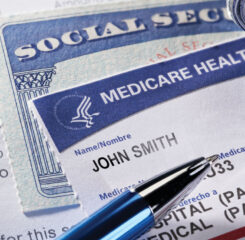CMS releases proposed SNF PPS Rule
The proposed rule estimates that the Medicare SNF payments will be decreased by $320 million. This is due to the proposed parity adjustment (discussed in more detail below) decreasing the net market basket update. The rationale for the proposed changes to the Patient-Driven Payment Model (PDPM) is discussed at length throughout the rule to address FY 2022 rulemaking concerns associated with COVID-19. CMS is asking for comments regarding the parity adjustment. In addition, the rule proposes a wage index decrease, PDPM code mappings updates, and other minor technical updates. There are updates related to SNF consolidated billing, the SNF Quality Reporting Program (QRP), and the SNF Value-Based Payment (VBP) program. CMS has also issued requests for information to establish mandatory staffing models, infection isolation and resource utilization, and future measures for the quality reporting program. Comments on the rule are due June 10.
LeadingAge will be working on comments to include the request for information sections of the proposed rule as well as a template for members to use to send to CMS before the June 10 deadline.
In addition, we will hold our network group meetings for nursing homes and use our communications to hear from members, gather input, and discuss advocacy for the proposed rule.
An overview of proposals follows below.
PPS Payment Updates
CMS is proposing a 3.9% or $1.4 billion update to nursing homes. The 3.9% market basket update is based on an unadjusted market basket increase of 2.8%, plus a 1.5% percentage point market basket forecast error adjustment and less a 0.4 percentage point productivity adjustment. This is reduced by a proposed 4.6% parity adjustment to maintain budget neutrality. These changes in aggregate mean that if all the proposals were finalized, SNFs would be look at a $320 million overall reduction in Part A payments. Please note these figures do not take into account the SNF value based payment (VBP) reductions which are estimated at $186 million. More on the changes to the SNF VBP program will be included in an upcoming article.
PDPM Parity Adjustment
When PDPM was finalized in 2019, CMS finalized that there would not be an overall change in aggregate SNF spending in the transition from RUGS IV to PDPM. In the rule, CMS outlines its data analysis to justify a recalibration of the parity adjustment in order to achieve this required budget neutrality. CMS’ data analysis showed an unintended increase in payments of approximately 5% or $1.7 billion in FY2020. CMS acknowledges this data analysis could have been affected by the COVID-19 public health emergency (PHE) and the FY2023 proposed rule outlines CMS’ actions to address stakeholder concerns from the proposed rule to final rule last year and the data challenges associated with COVID-19. The impacts of the PHE led CMS to not propose a PDPM parity adjustment in FY2022. However, in FY2023, CMS is proposing an immediate 4.6% parity adjustment. To try to account for the impacts of the pandemic, their proposed methodology excludes those patients that used a COVID-19 PHE waiver, who were diagnosed with COVID -19, and creates control period data using months with low COVID-19 prevalence from FY2020 and FY2021.
LeadingAge members can offer comments to CMS on the potential to delay or phase in the parity adjustment. CMS is also seeking comments on the methodology and the application of the parity adjustment.
PDPM ICD-10 Code Mappings
In order to improve consistency between the ICD-10 code mappings and current ICD-10 current guidelines, CMS is proposing several changes to the code mappings.
Wage Index
CMS proposes a permanent 5% cap on annual wage index to mitigate instability in SNF PPS payments. This is to reduce the operational instability that could be caused by changes in providers’ wage index payments. CMS is proposing this cap across Medicare settings.
Requests for Information
Facilities to Establish Mandatory Minimum Staffing Levels
The Administration has put forth the need to implement a mandatory staffing level for nursing homes and as part of that effort is conducting research and presenting a comprehensive study. The proposed rule outlines CMS’s request to seek public input on addressing direct care staffing requirements for registered nurses, licensed practical nurses, and certified nursing assistants. CMS also is seeking input beyond the nursing realm on what positions should be considered direct care staff. CMS will use this research and study to inform policy on appropriate staffing levels.
This request for information seeks responses to seventeen questions for stakeholders to give input and respond as an invitation of the aspects of staffing in nursing homes.
Coding Infection Isolation
During the COVID-19 PHE, a classification for infected isolation was used to define a patient alone isolated in a separate room due to an active infection. CMS has received stakeholder feedback requesting the change in some criteria to code infection isolation. In addition, there are questions on the resources needed for these patients compared to being treated in a cohorted environment.
The coding infection isolation request for information seeks to determine: 1) whether or not there is an increase in resource utilization; 2) to include cohorted patients, and 3) to ensure the payment rate impact to infection isolation is consistent with the increase in relative costliness associated with these patients.
LeadingAge published a separate summary of the SNF Value Based Purchasing program and Quality Reporting Program components of the rule here.

Most Recommended
July 23, 2025
 Budget Reconciliation 2025
Budget Reconciliation 2025
October 10, 2025
Pathways for Foreign-Born Workers
Recently Added
October 14, 2025
ROAD to Housing Passes Senate
October 14, 2025
Dana Conrad Will Receive the 2025 McHugh Award
October 13, 2025



